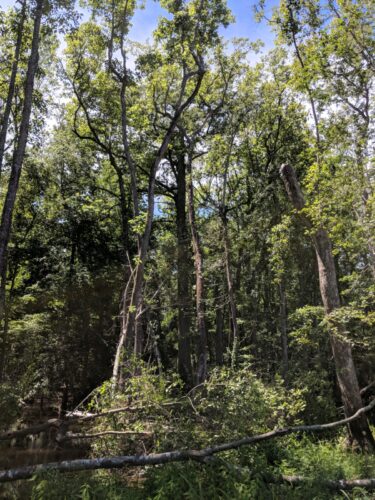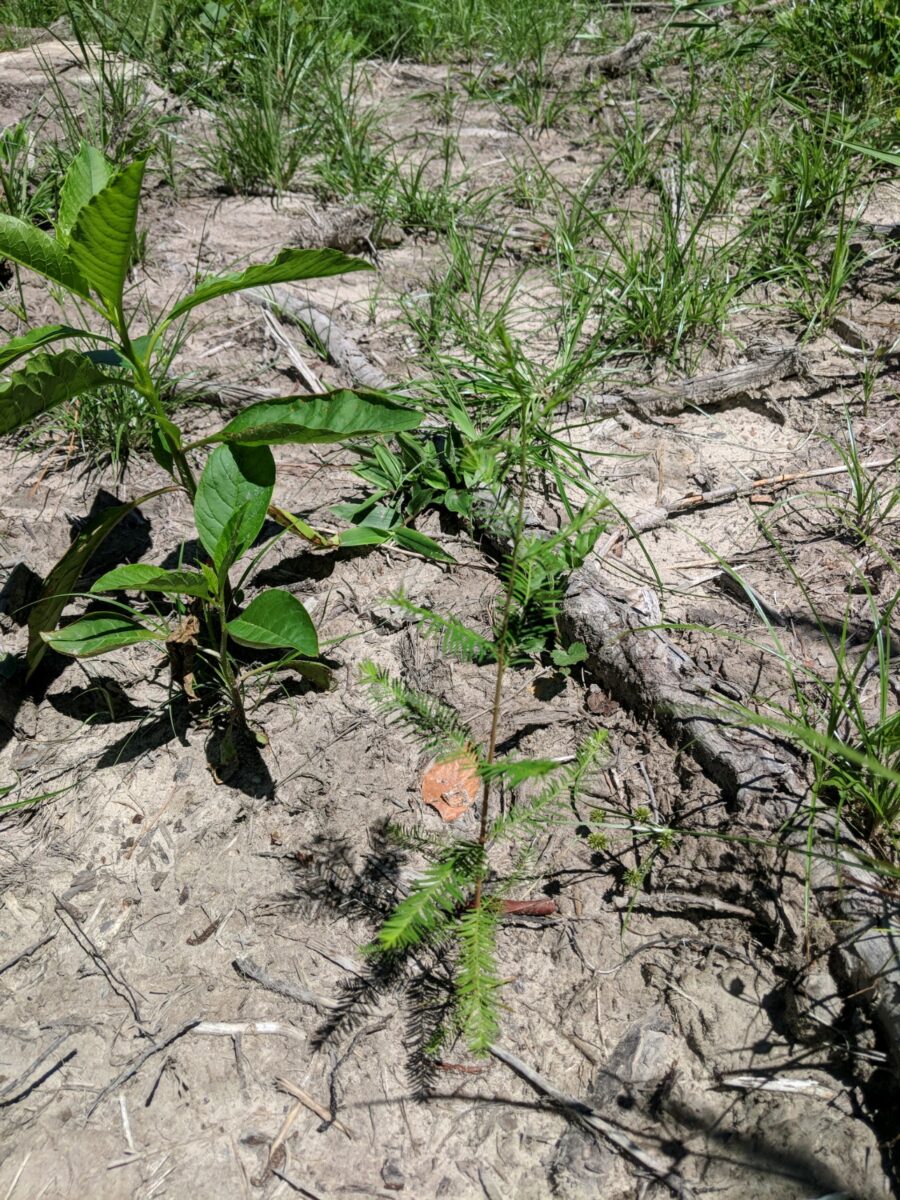Field Notes: A Tale of Cypress Trees and Floods
August 27, 2018 10:54 am

by Senior Area Forester Scott Bachman
Earlier this summer my co-workers and I were finally able to get out and measure a harvest in Southampton County. The harvest had been in a stand of bottomland hardwoods. The landowner retained a riparian buffer on both sides of the stream channel during the harvest to protect the water quality of a significant tributary of the Blackwater River. The Blackwater River is a designated Scenic River in Southeastern Virginia that eventually flows past the City of Franklin and into North Carolina. It is a substantial source of fresh water for the Albemarle Sound. This buffer qualified the landowner to take advantage of the Riparian Buffer Tax Credit Program.
Heavy spring rains had finally stopped and the water had finally subsided enough to walk the harvest area. We headed out to the tract early in the morning to beat the fast-rising temperature. Unfortunately, we were not early enough!
On-site, our team split up since the harvest was on both sides of the broad bottomland flat. I took the far side of the property. After a half hour or so, I began to curse my choice of where I was working. It was hot and occasionally flooded. I even scared a great blue heron out of the harvest area. You know it is a wet area when the great blue herons are hunting in it!
About that time it dawned on me how lucky I was that this was my office for the day! I had just seen a great blue heron up close. Up on the highlands of this tract there were a couple bobwhite quail whistling, trying to court the favor of a female. Around my feet were a myriad of frogs jumping from one puddle to another. Signs of life were everywhere around me.
People may not think about a harvested area as a nursery but it surely is.

Not only were signs of animal life abundant in the rapidly drying rich soil, but under my muddy boots were thousands of tiny bald cypress seedlings  along with regenerating grasses, forbs and other tree species.
along with regenerating grasses, forbs and other tree species.
Bald cypress has an interesting method of recolonizing a disturbed wet flood plain. You might assume that the seedlings result from seed that fell from a tree directly over the spot that is now supporting the carpet of cypress seedlings. That may happen in some cases, but cypress trees drop their seed in the late fall and early winter when water levels at their base may be high and rising. Bottomland forests are not typically harvested during seed fall due to this high water level. Where could all this seed come from if it did not come from trees that were on the site?
Cypress seed is not heavy. As the fall flood waters creep into the bottomland areas it carries the seeds of cypress trees growing in the watershed. During the flooding season, the seed will float downstream or perhaps even upstream! As spring fades to summer the water level in our swamps drops. Bald cypress seeds simply float with the floods until waters recede and they are deposited on the freshly laid layer of silt! During years of very high water, cypress seeds can be carried well up into what might be considered “high land”  These dryland cypress may have more competition from other trees but if they get sufficient sunlight, they will do well and eventually become spectacular members of the forest canopy.
These dryland cypress may have more competition from other trees but if they get sufficient sunlight, they will do well and eventually become spectacular members of the forest canopy.
Bald cypress seedlings that develop on the wet soils in swamps must be able to grow tall enough to be higher than the flood waters when they return in the winter. Because of this, cypress trees are very fast growing trees in their youth. The Virginia Department of Forestry nursery grows and sells bald cypress seedlings. These trees are one-year-old seedlings. When they arrive on your doorstep they are often more than three feet tall! The seedlings I saw were, at most, probably only two months old.
Living in Southeastern Virginia, I have developed a fondness for bald cypress. The feather-like foliage is beautiful in the summer and striking in fall color. As a gymnosperm species it is unique in that it drops its foliage in the winter.

Bald cypress is an excellent yard/urban tree. In dry settings the tree will not develop the characteristic knees found on trees in its native wetland site. It is very tolerant of poor soils and soil compaction, relatively pest free, rot resistant and fast growing. The fine feathery “leaves” are easy to clean from yards with either a rake or blower. Just make sure you have plenty of space when planting this tree. Cypress can easily top 80 feet tall and live for hundreds of years!
Tags: Riparian Forest Buffers, Water Quality
Category: Water Quality
